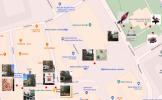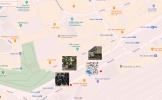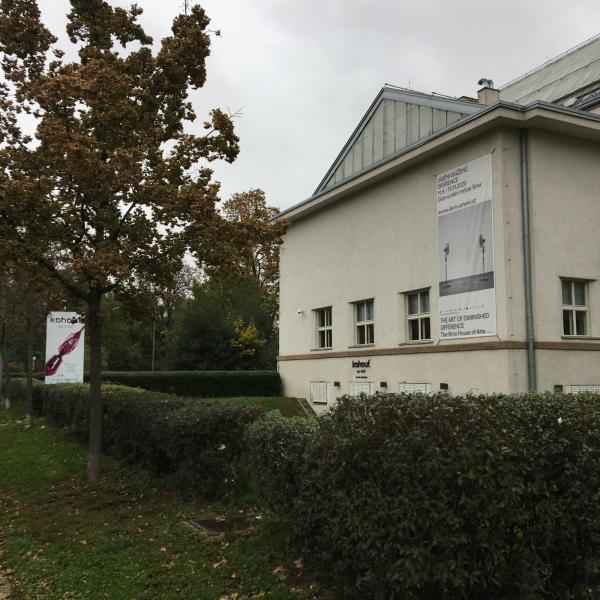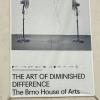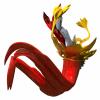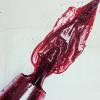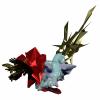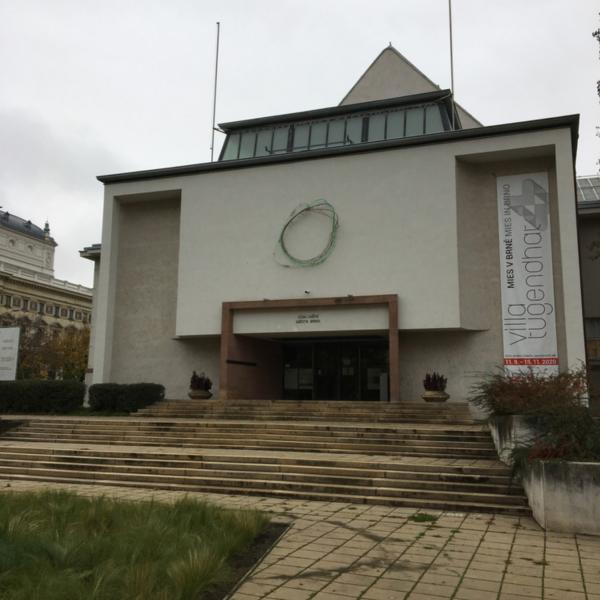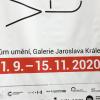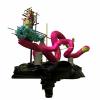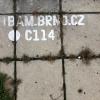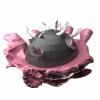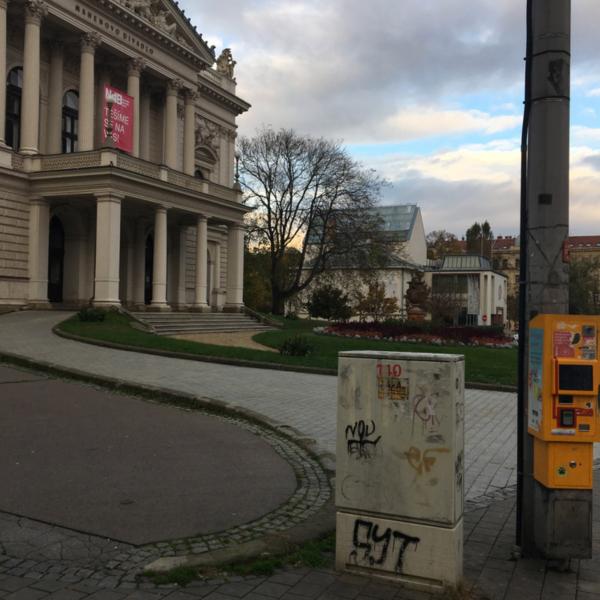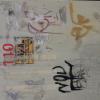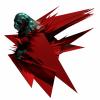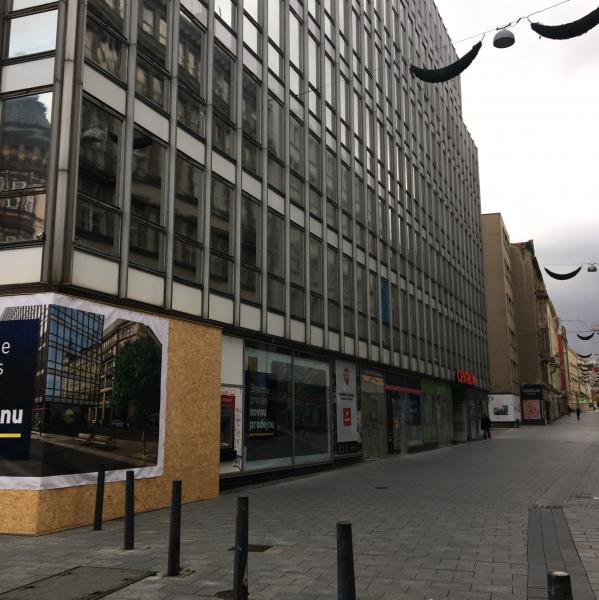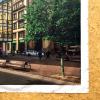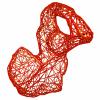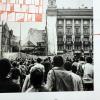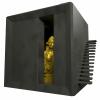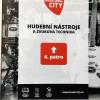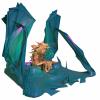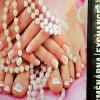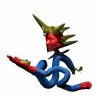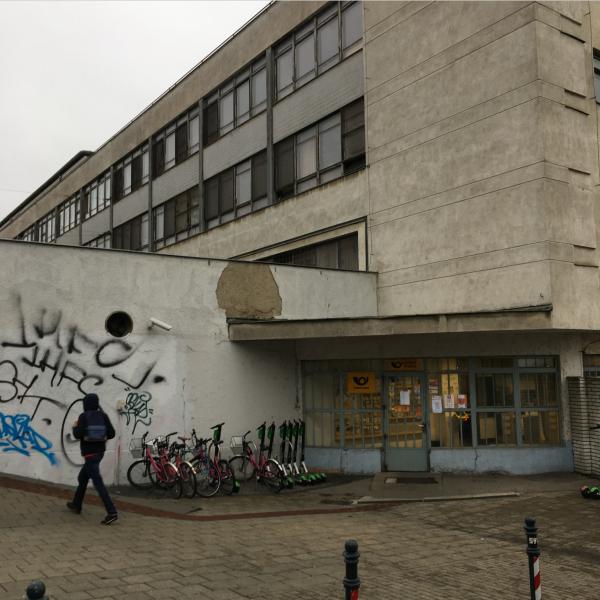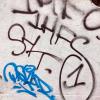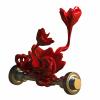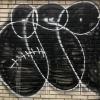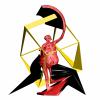MERZBAU REVISITED
2. – 11. November 2020
Virtual Exhibition in Public Space for Brno Art Week
Vašulka Kitchen Brno in cooperation with Helena Lukášová and the participants of her workshop have prepared a unique virtual exhibition in public space based on digital, social and democratic elements for Brno Art Week, which has moved online in 2020.
Exhibitors: Helena Lukášová, Barbora Cicoňová, David D'Ostilio, Andrea Dudášová, Vítězslav Homolka, Christina Karababa, Veronika Lukášová, Michal Mitro and Celina Rosas Romero.
How to proceed?
First, open the xr.plus website on your smart device and allow access to the camera - you will find the links below. A box will appear asking you to search for an image previewed in the lower left corner of the frame. When you point the phone at the desired shot, a virtual 3D model is displayed.
The model remains loaded, so it is possible to manipulate it on the screen - rotate, zoom in and out. It is possible to aim the view elsewhere and "place" the 3D model in another environment. A total of eleven models are prepared for display in the AR environment.
The steps are illustrated below. You can browse the photos with the left and right arrows.
Maps of the Exhibition Areas
Where to look for the sculptures?
In the vicinity of the House of Arts - Divadelní Street side
There are two sculptures here:
PLAYERS_FLOWERS_DRAPERY_VENUS_BLOOD_SWEAT_TEARS Go to: xr.plus/stz
COMET_HAND_CRYSTALS Go to: xr.plus/415
There are images attached below with 'marker' images that you need to find.
In the vicinity of the House of Arts - around the main entrance
Here you'll find two sculptures:
GOD_UNDER_THE_CONSTRUCTION Go to: xr.plus/6cu
CORAL_SPHERE Go to: xr.plus/ab5
MALINOVSKÉHO NÁMĚSTÍ
KOBLIŽNÁ Street - around the CENTRUM shopping center
Here you'll find two sculptures:
AI_OPTIMIZED Go to: xr.plus/3s7
NATURE_ARGUES Go to: xr.plus/lsy
HOUSE_ALONE_LIONESS Go to: xr.plus/lsy
HAIR_OF_MEDUSA_LIFE_ON_ITS_OWN Běž na: xr.plus/kbi
In the vicinity of the MAIN TRAIN STATION (V. platform) and the CZECH POST OFFICE
There are two sculptures here:
FLOWER_VEHICLE Go to: xr.plus/1q9
SOLDIER_ETERNITY Go to: xr.plus/w84
MERZBAU REVISITED – Virtual Exhibition in Public Space
In the current pandemic situation, which restricts free movement and social contact, which also leads, among other things, to the closure of galleries, exhibitions and cultural institutions, works of art located in closed buildings have become inaccessible. However, in the limited conditions of social isolation, there is the possibility of at least partially overcoming the barrier and establishing a connection. The online workshop Merzbau Revisited organized by the Brno based artist and digital sculptor Helena Lukášová offered the possibility of international connection and communication. It was an incentive to work together in digital space. Establishing communication with artists from different parts of the world, their mutual cooperation, sharing and creation, in addition to the actual physical implementation of virtual objects, were an important aspect of the Merzbau Revisited project combining digital creation with participation, social ties and interaction.
The inspiration for Merzbau Revisited was Kurt Switters' lifelong Dadaist art project, the Merzbau building, which in its time (from the 1920s) marked a radical change in the perception of the work of art outside conventions. The changing and ever-growing building / object, growing through the ceiling and floors of Switters' dwelling, represented a living unfinished work of art, anticipating the idea of the so-called open work, formulated by Umberto Eco in relation to literary works as well as contemporary fine art in the early 1960s. Openness, infinity, constant variability and variability have become the main inspiration for the creation of these digital sculptures, which offer endless possibilities.
During the workshop nine artists from diverse locations collaborated on works which were not preoccupied with reconstructing Schwitter's objects or its fragments, but about using the principle of a growing and changing sculptural work. These artists with prior experience with 3D modeling, have worked with data, scans, and virtual objects to create objects based on a myriad of visual models and digital masters; they worked with models of ancient sculptures and sculptures from museum collections, but also with everyday objects, natural products or fragments of the human body. They had models at their disposal in a shared digital library, which they were free to download from, share and use. The principle of data collection and creation of a collection of models in one common database / library is reminiscent of the Clause Oldenburg Mouse Museum project at MoMA in New York in 2013. In the virtual library, the models wait for further use and combination of various types and motifs into a final sculptural work. There was no predetermined aesthetic for the final works, it depended on the preferences and their own artistic approach of individual artists and on mutual cooperation, in which several authors shared a common virtual model. The only restrictions on the creation of sculptures were the technical limits determining the size of the sculptures and the complexity of the model in terms of its printability.
The character of individual virtual sculptures determines a largely intuitive approach to working in a digital environment. Instead of precise constructions, algorithms and technical models, Helena Lukášová during quarantine began working with 3D models in a way that is close to physical modeling and shaping of matter. The initial models, consisting of assemblages of various elements - figural and abstract, are kneaded, stretched, expanded and compressed as if they were made of rubber or plasticine. Their "softness" evokes the organic nature of works that appear to be alive and growing in space. One striking feature of the virtual sculptures is their visual appeal, enhanced by vibrant colors and shiny surfaces, reminiscent of current the style of post-internet aesthetics in the institutional art world, making them perfect pop products, or fetish sculptures.
The exhibition prepared on the occasion of Brno Art Week presents the results of a four-part workshop in public space, especially in the vicinity of the Brno House of Arts, the seat of Vašulka Kitchen Brno. The intangible nature of virtual sculptures allows the same sculptures to be placed at the same time in other cities around the world, such as New York, Düsseldorf, Mexico City, London, and Bratislava. At the same time, the statues can be viewed by spectators in different parts of the world. Using a smartphone or other devices, it is possible to load sculptures in a specific area of the city, but also to model and move them using your device. Thus, viewer participation also becomes part of the game, who is invited to active participation and his own creative activity.
The size of the virtual exhibition in public space is specific for several reasons - it allows you to realize sophisticated art objects in places where their physical realization would be very expensive or technically unfeasible and the security of sculptures is eliminated due to their possible destruction or theft. An important feature of virtual sculptures is also that they are permanently present in public space, but at the same time they are not visible to ordinary passers-by. The works are thus simultaneously democratically accessible in accessible places in the city, but at the same time they are exclusive or exclusive and accessible only to a certain circle of viewers who know about their existence and have access to it. The element of secrecy, or insight into the principle of viewing an exhibition, may resemble similar systems used in well-known virtual games, such as Pokémon Go, in which participants load virtual characters in a similar way. Through this element of the game and the involvement of a wide group of spectators, we experience a sense of alliance and sharing of experiences, despite the significant limitations of live social contacts and communication.
Our gratitude to Brno Art Week for their cooperation during these difficult circumstances.
https://brnoartweek.cz/
https://www.facebook.com/brno.art.week/.
The Merzbau Revisited Project was made possible through the financial support of the Digitalization project of the Ministry of Culture and through financial support provided by TIC Brno (Tourist Information Centre).
MERZBAU REVISITED Participants
Barbora Cicoňová
I come from Slovakia and have been living in Brno for a few years now, but I have graduated from the University of Ostrava in Ostrava. During my studies I followed up on the photography studio with intermedia art studio Concept-object-installation led by Doc. Mgr. Peter Lysáček. My focus is mainly on the intertwining of media - technologies with conceptual ideas, perception of space from site-specific installations to immersive projections. What interests me most are the interactions, human contact with the art, and the emerging art after human input.The individual layers of my work often contain common gestures mixed with personal statements and experience, transmitting to a more global social subtext.
David D’Ostilio
David D’Ostilio lives and works in the New York Metro Area. He teaches 3D design, digital fabrication, sculpture, and drawing at William Paterson University. David’s artwork focuses on Sculpture and Digital media utilizing Digital tools to realize physical objects in a variety of materials. He draws inspiration from art history, philosophy, environmental issues, and family identity.
https://www.daviddostilioart.com/
Andrea Dudášová
My name is Andrea Dudášová, I study at Academy of Fine Arts and Design in Bratislava, department of sculpture. In my artwork I focus on society in my nearby environment and elements, that society creates in this enviroment. Because they are ordinary oftentimes they are overlooked. Presentation combines commerciality, humorous and seriousness at the same time.
Vitěslav Homolka
Christina Karababa
Born in Athens, working in Düsseldorf, Christina Karababa is a classical trained jewellery designer who later studied Design and holds a doctoral degree in Fine Arts and Design. She incorporated additive plastic techniques early in her work, having been one of the world’s first prototyping jewellery designers. She has participated in collaborative groups such as FORMATIV and formulated her very unique workflow as Performative Prototyping. Her teaching activities cover China, Slovakia and Germany. Both in her artistic practice, as well as, in her practice-based reasearch, she investigates approaches which are based on the intersections of artistic and technical procedures and production methods. Interdisciplinary transformation and overlapping series of explorations initiated through switched media are important issues in her work.
http://christina-karababa.com/wp/
Helena Lukašová
As an artist, I am interested in the possibilities of how digital media can capture the physicality of the human body . I have recorded my own body movement through digital motion capture, where gestures leave a trail in space and time becoming the basis for unique 3D forms. I have also experimented with customised EEG software to visualise brain waves . These projects have then been digitally re -fabricated with 3D printing, CNC machining and robotic milling bringing the forms into the world once again. I treat the resulting sculptural forms as living objects in their own right. This approach to sculpture, derived from such unexpected sources, fundamentally changes our understanding of a traditional form . While the binary nature of digital media in my work generates new representations, the physical and mental capacity of a human body, its sexuality and mortality remains the same. This raises questions about how we might cope with the limits of our physical existence in the information age, what will be remembered and what is important.
Veronika Lukášová
Veronika Lukášová (1974) explores relationship between art and science as
an artist and theoretical researcher, from the buildinng blocks of reality to space exploration. Her disertation theses Supply your own light (2019), completed at the Faculty of Fine Arts of the Brno University of Technology, Czech Republic, analyses links between art, science and photography within current cultural context with a specific focus on partical physics. This research was a continuation of Veronika’s MA Photography degree project Machinate Mammal (2012) at the LCC UAL London. Veronika is a member of the Nuclear Culture Group led by Dr. Ele Carpenter and also contributed to her publication Nuclear Culture Source Book (2016). Veronika forms HEVER art collective with a digital sculptor Helena Lukasova. After ten years being a professional photographer and writer in the US and the Czech Republic, Veronika now lives and works in London, UK. Her recent works and writing appeared in FlashArt magazine, ArtTalk.cz, Flowee, Artists Respond Zine and others.
http://www.veronikalukasova.com/
Michal Mitro
Post-medial tendencies, sculpturality and visuality are defining pillars of my practice. My working method is best described as artistic research and its outputs often take a hybrid artScience shape. Topics that resonate often in my works explore present and future states of our planet, politico-economic societal constellations and relationship between human and non-human. I approach art-making as information-sharing and to that end utilise immersive and narrational strategies. I’ve exhibited and performed in Czechia, Slovakia and across Europe. Besides being an active art practitioner, I’m also part of STELLA - Somatic Tech Lab - that maps convergences of technologies and movement-based arts. I, too, curate ssesi. space online and in Brno, Czechia.
Celina Rosas Romero
Born in Mexico and living in the Czech Republic, I’m a former Product Designer and student of Ma level in Fine Art. I work mainly with clay, doing sculpture, and pottery. I have experience developing concepts for design projects and in art and design expositions.













